The Best Tools to Create an Effective Content Map
Everyone dreams that their potential customers will click and buy their goods when they first see your company's website. However, this is only a distant dream for most of us.
Most likely, your target audience will start by browsing your site. The typical visitor to your site wants to learn more about your company, find out how effective it is, and compare your product with others. This experience can be created through content mapping.
Without considering the consumer experience, you cannot create effective content on your company website. Content mapping is a great tool when creating a site and creating content for the site. It allows you to match customer needs and problems with relevant, interesting content.
Content mapping allows you also to create highly focused, tailored content for each stage of the buyer's journey. It can also help you nurture prospects and customers to make a buying decision, and involve your customers at all stages of the marketing funnel.
Creating content maps is one of the most effective strategies to keep your content aligned with your company's goals. In this article, we will explain what a content map is and how to start creating one for your business, what a customer journey is, what content marketing tools, such as a newsletter creator to use with content maps, and present interesting content mapping templates.
What is a content map?
Content map is part of digital content strategy and it is created to plan delivery of the right material to the right people at the right time. Content mapping takes into account the characteristics and inclinations of the person who will consume your content - it's a kind of targeted content marketing focusing on the needs and relationships of your customer. Mapping content in this way allows you to better match your requirements with the different types of content you will deliver.

A content map describes how each text, image, or another piece of content you create fits and supports the consumer journey at all buyer journey stages. Matching content to the customer is the basics of any content marketing strategy, but a content map means a more complex approach.
With a content map, you'll be able to easily connect each piece of content to a specific stage of the customer journey, uncovering your chances of meeting your audience's requirements at that moment. A content map can help you organize your content ideas for a website, blog or social media profile.
Content map data can be incorporated into anything you currently use to manage your content calendar. Many content marketing programs like Meta for Business already have content mapping tools built-in, allowing you to report and filter content by stage easily.
Why do you need a content map?
Content mapping allows you to generate content that supports the customer journey on each stage of their relationship with your company. This will enable you to provide the ideal, consistent customer experience and deliver the content your customers need.
With a content map, you know that your brand's content accompanies each person at all stages of the customer journey - from attraction to their conversion and retention.
Your content needs to serve a variety of functions, as potential customers are looking for different information throughout their buyer's journey. To ensure that your company's content is effectively acquiring leads, you need to provide differentiated content that covers the various topics people are looking for at each stage of the process. That's what content mapping is - tailoring your content to your target audience, especially in terms of the customer journey.
However, developing content for each customer group is not that simple. You need to determine where in the sales funnel your audience is most likely to interact with your content. With content mapping, you'll learn how the relevant content leads potential customers down the consumer path and how to better allow them to make a purchase.

Website content mapping will allow you to gain a deeper understanding of your customers. You can learn more about your customer's goals, requirements, and objections by analyzing the path they take from interest in your product to conversion. All stages of the buyer's journey help you create a content map that can showcase various content formats, depending on your activities and strategies. Content marketing relies heavily on market segmentation, and a website content map is a visualization of which areas can influence which readers.
What's more, content mapping is useful for controlling and organizing your existing content. To do content mapping you need to start with a review of topics, remove duplicates, refresh state content and discover gaps in your website. Content mapping allows you to optimize each element and determine its function - both old content and newly created content.
What is a customer journey?
The customer journey or buyer journey is a series of encounters between a person and your brand, product, and/or service, from initial contact to purchase and beyond. It includes both direct contacts with you, such as making a purchase or asking for more information; and indirect interactions, such as searching for information about a product using search engines or social media or watching a video review.
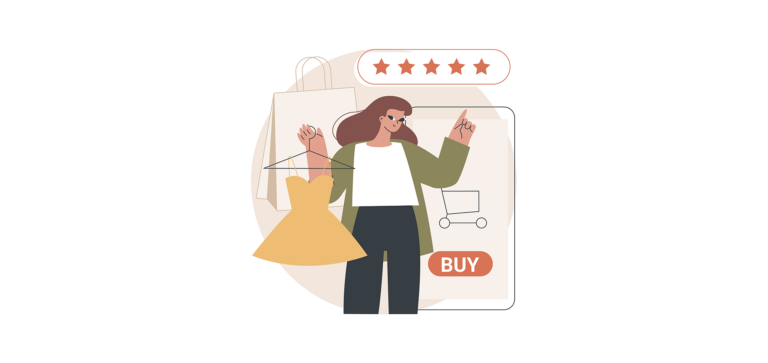
Content mapping is based on visualizing the customer journey as a map. Each encounter is a consumer's contact with your brand.
Here are three typical buyer's journey stages used by many companies:
-
Awareness: The buyer is only now becoming aware of the existence of your product and service and is beginning to seek information. Often, at this stage you could emphasize your logo and brand.
-
Attention: The buyer is fully informed about the product and potential solutions, and is looking for reasons to buy it instead of alternatives. This stage presents the product or service.
-
Decision: The buyer has made a decision and is ready to commit to a purchase or subscription. During the buyer journey stage you can present value added - bonuses, promotional offers, and so on.
After the purchase, you need to continue to take care of the customer. He or she may become a regular user of your products or a brand ambassador who will recommend products for free - as long as they are of good quality. Your content map shouldn't end with the purchase.
Every buyer's journey is unique, and the route each person takes from finding out about a product to buying and using it means you need to tailor your marketing strategy to each consumer. Your content map must reflect how you create content for various types of customers.
How to create a successful content map?
A buyer persona is a representation of your potential ideal customers. You create these personas based on groups of customers so that you can understand their requirements, habits, and concerns and tailor your content to them. For example, if you run an ebook store, you can look at your customers' habits and develop buyer personas based on them.
The most effective buyer personas are based on all sorts of market research, as well as insights from your real consumer base (through surveys or data analysis). Your content strategy should be guided by the content ideas you draw from these buyer personas.
Buyer personas should be used by every company to identify its target consumers. When developed well, they can be an important resource for your content map and the content strategy you base on them. A customer-centric content map focuses on the basic needs of your target audience you express as buyer personas.
To create a buyer persona, think about a sample customer. Invent a fictional person from scratch: determine their age, gender, location, education, his financial status. If it's a business customer, work out the size of the company, its financial situation, and the number of employees.
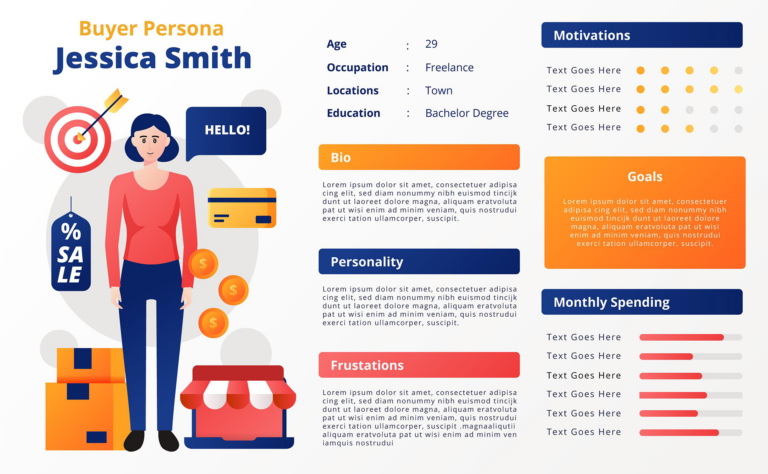
Based on this, determine what drives their decision-making, what goals they want to achieve, and what they will do about it. If you sell eBooks, for example, you can specify that your buyer persona is Eve, a 20-year-old college student who wants to read funny stories once in a while, and Martin, a busy businessman who wants escapism in peace and quiet. These two people have different buying habits, and different needs, and to help them decide to buy a particular book you need to provide them with different content, whether in your product description or advertising material.
You will be able to more easily tailor material to your customers' tastes if you create a clear representation of who they are - this is exactly what a buyer persona is. Depending on your industry, you may only have one or two personas or even hundreds - but beginners should only have a few.
Try to identify broad groups and create a buyer persona based on each one of them. For example, board games are bought by parents with children, students looking for a party game, game enthusiasts, and bar owners. Based on these groups, now you can create 4 or 8 different personas - you can vary it up to create a more versatile content strategy.
The buyer persona you target is only half the problem when it comes to content mapping. You need to know where someone is in the buying cycle, in addition to who they are (i.e., how close they are to making a purchase). You'll write differently to Martin, who is browsing reviews of your eBooks on Goodreads, and differently to Eve who has never heard of you.
The material you want to present to them should meet their current requirements, not just be a stiff, boring description of product-focused content. Someone is looking for information that alleviates early concerns and gradually educates potential customers on how your product can help them.
To pique Eve's interest, you can add reviews of amused customers in the ebook description - now you know that testimonials are an important part of the content map. To reach Martin, you can quote compelling content from reviews or present a video on your website. This is how you create points on your content map.
Content mapping tips
To create a content map, you need to match the right content to the right stage and to a specific type of customer. You can use the content map template to help you out.
Awareness
If someone is not aware of your company, consider whether such a person is aware of the industry as a whole and how they feel about it! Our example, Eve may not read books that often. Therefore, people outside the industry are often curious about promotions and unusual content. For building awareness, information and instructional materials are also important parts of awareness stage content. Content formats for this stage of the buyer's journey can include a blog post, a ranking, an interesting infographic, etc.
Thinking
At this stage, buyers often compare options. This is the best time to send them specific, factual information describing the strengths of your products. This can be reports, comparison sheets, reviews, or a product presentation. This is where brand ambassadors are also very important - if you have already gained fans, they will often describe your products for free.
Decision
At this point, you need to help the consumer validate his choice and encourage him to choose you. Very often a second person's confirmation or personal contact works well here. Think of the personalized customer experience you can deliver - and what could serve a better understanding of your product's advantages.
Companies can often be convinced by a case study. Another good example is a free trial so that everyone can get acquainted with your product.
After the purchase, remember about the later buyer's journey stages: take care of the customer - enable them to buy additional content, and give them discounts on new purchases and related products. You might never change them into a brand ambassador but you should keep in mind satisfied users - because their testimonial is an important part of any content mapping strategy.
When creating a content map, you need to add existing content to it - many tools and templates allow you to do this. Assign existing content to each phase of the customer journey. Include such things as the type of content, the stage the content relates to, and the quality.
The best website content mapping tools
Content mapping process doesn't require any specialized software or designs. You can organize your website easily with the tools you already have.
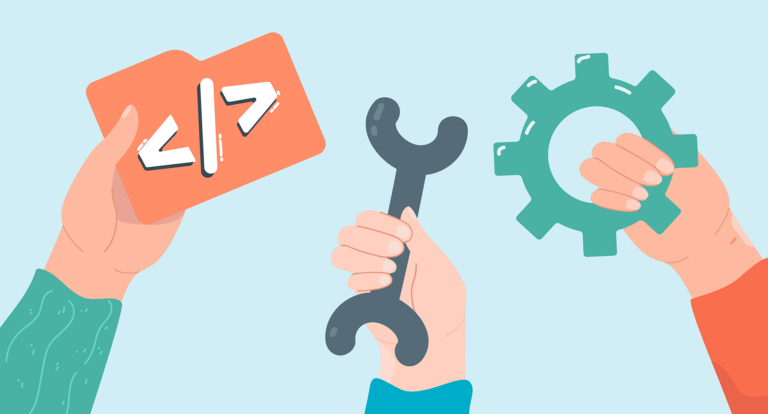
You can create a content map in a document editor like MS Word, Libre Draw or Google Docs, or Presentations. You can draw a diagram to map existing content and present the customer journey map to the viewers. If you want to use a more dedicated flowchart tool to create content maps, there are many solutions available on the market.
CMS software that can tag content is a great tool for creating your own content map. CMS Hub from Hubspot can easily help you organize your relevant content ideas. There are also many WordPress plugins to help you out.
To create buyer personas, you can use a more developed program, available from Hubspot or userforge - or use a graphic design program to help you visualize the persona.
Once you have prepared all these materials, you can display them in style. When you create a content map, you can transform it into a company newsletter and publish it online on Publuu. It will be available for every user and they will be able to read it on any device.

With Publuu your content map will stand out from the crowd - any template will look better as an interactive company newsletter. You can add links and interactive galleries to your content map so that it can accurately display your content. You can display company newsletters quickly and share them in online meetings so that everyone can access them at any time.
Content mapping template gallery

Mind map templates, like this one, can help you to create a website content map.
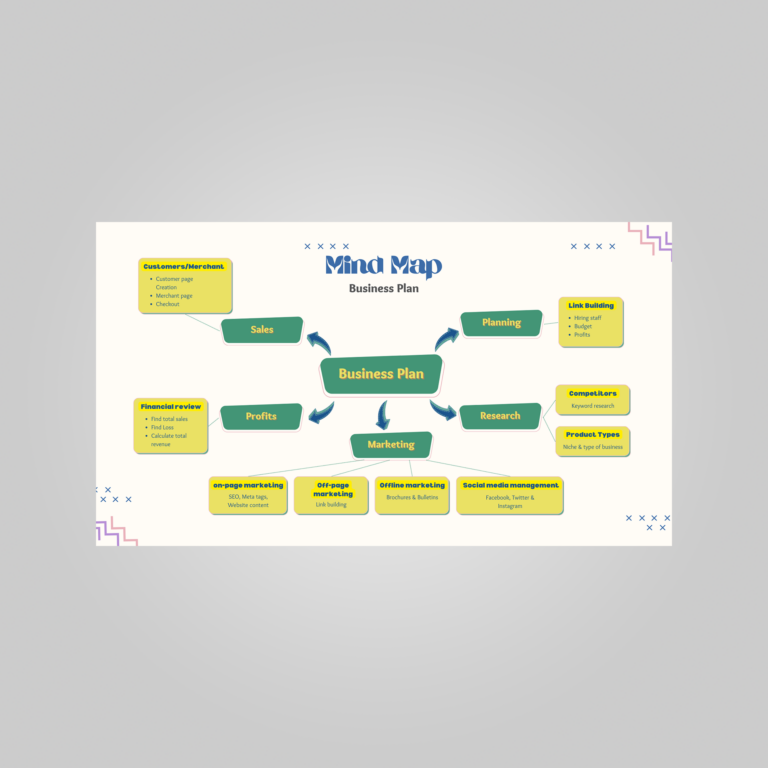
This business plan can also serve as a great content map template for your brand.
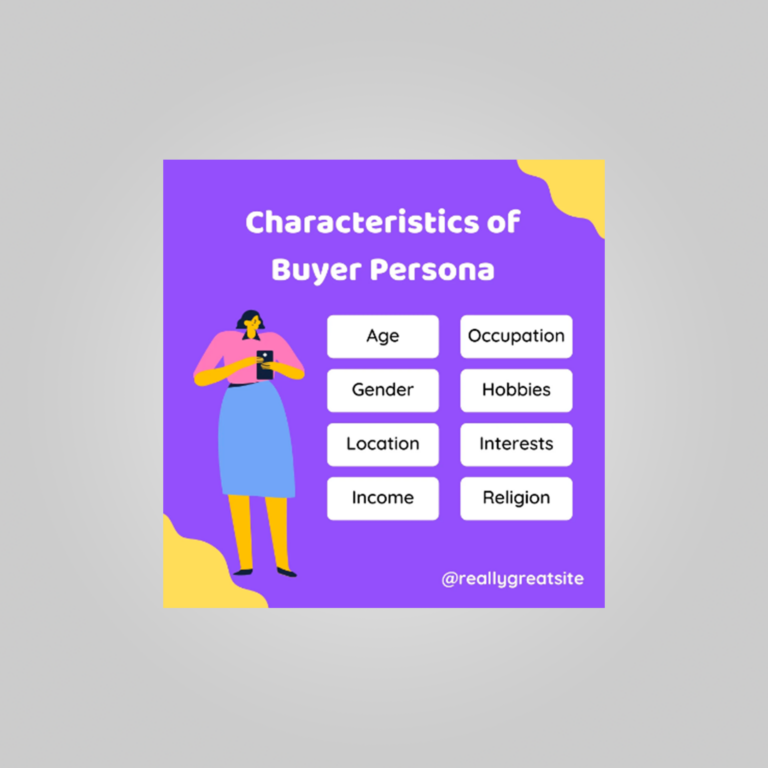
Thanks to this template you will be able to show your content ideas on social media posts like Instagram.

Content mapping templates like this one work best with presentations - you can convert them to Publuu company newsletter.
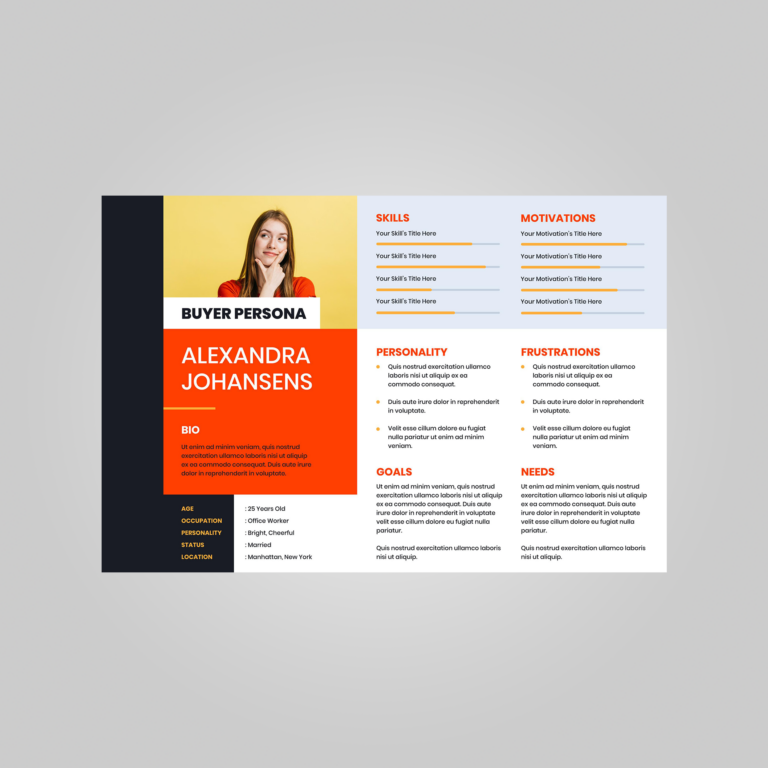
This colorful template is perfect for displaying a buyer persona during a content mapping business meeting.
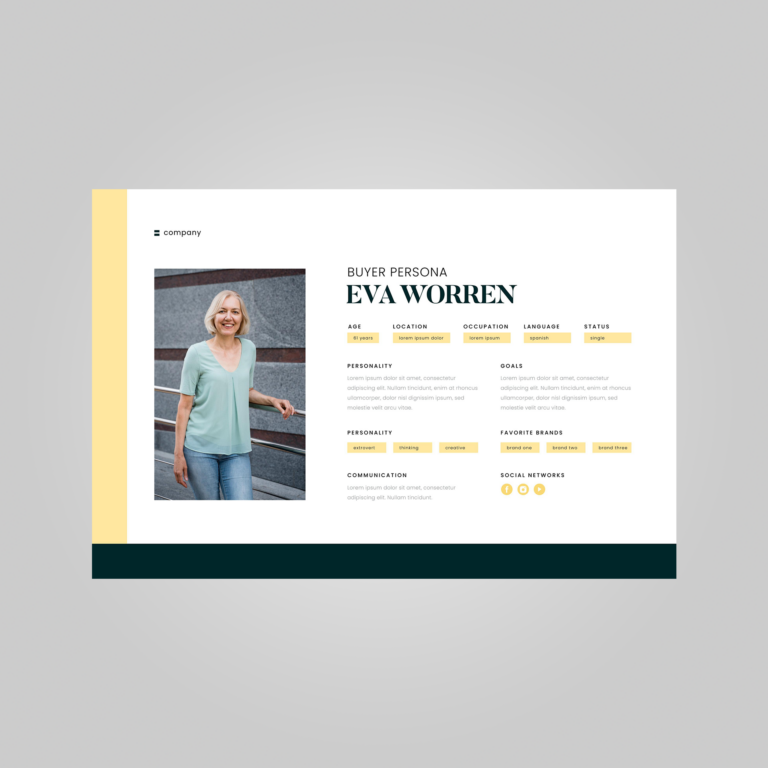
You can replace photo of this template with one from any stock gallery.
Conclusion
A content map explains how each piece of content you develop fits and supports the consumer's journey at each stage of their buying journey. You need to have a clear picture of your customers, which is where persona can help you. A buyer persona is a fictional portrait of your ideal customers. You develop them based on customer groups, so you can understand their needs, habits, and major concerns. They can be a valuable resource for your content mapping process if built properly. You need to assign existing content to each stage of the customer journey.
You can create a content map without any major content mapping tools. You can create mind maps in software like Microsoft Word, Libre Draw or Google Presentations. Publuu is also a fantastic presentation tool for displaying and organizing content maps, company newsletters and more.
You may be also interested in:
10 Creative Newsletter Ideas for Your Business
What is a Company Newsletter?
Top 10 Newsletter Platforms and Software in 2026